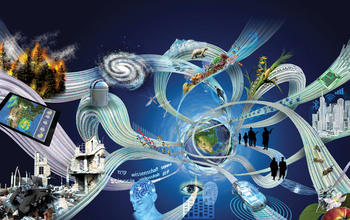All Images
Media Advisory 17-001
NSF to host ‘Arc of Science’ event on Capitol Hill
Media invited to join NSF Director France Córdova and NSF-funded researchers to learn how basic research benefits the U.S. economy, national security, U.S. global competitiveness
This material is available primarily for archival purposes. Telephone numbers or other contact information may be out of date; please see current contact information at media contacts.

NSF is transforming the world through science.
Credit: Nicolle Rager Fuller, NSF
Download the high-resolution JPG version of the image. (11.4 MB)
Use your mouse to right-click (Mac users may need to Ctrl-click) the link above and choose the option that will save the file or target to your computer.
A computer model developed by mathematician Andrea Bertozzi, anthropologist Jeff Brantingham and others at UCLA, provides the LAPD with a new tactic -- called predictive policing -- in their fight against crime.
Credit: NBC Learn and the National Science Foundation
A research team at the University of Delaware, led by physical therapy professor Cole Galloway, is improving mobility for mobility-impaired infants by modifying electric toy cars that allow them to independently explore their surrounding environment. Mobility at an early age is critical for cognitive development, and each car is modified specific to its young owner's needs. The team studies how early mobility advances social behavior among infants. Through their GoBabyGo! Program, Galloway and mechanical engineering professor Sunil Agrawal created networks to provide solutions for children with mobility issues.
Credit: NSF
The WIFIRE initiative, led jointly by the University of California (UC), San Diego, and the University of Maryland and funded by the National Science Foundation (NSF), will better monitor, predict and mitigate wildfires in the future, by merging observations, such as satellite imagery and real-time data from sensors in the field, with computational techniques like signal processing, visualization, modeling and data assimilation. WIFIRE is part of the NSF Hazards SEES program, which enhances sustainability through the use of advanced technologies and new methods.
Credit: NSF


